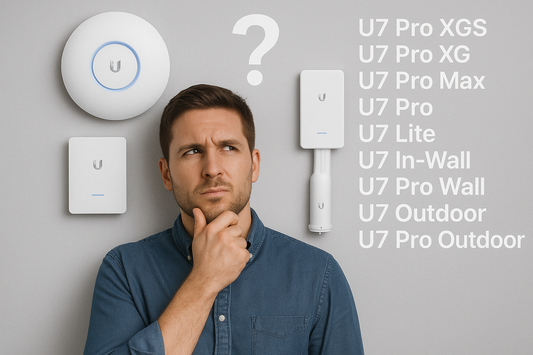Power Over Ethernet (PoE): Decoding the Differences Between PoE, PoE+, and PoE++
In an era where efficiency and streamlined operations are paramount, Power over Ethernet (PoE) technology has become a fundamental tool in network design, allowing devices like IP cameras, VoIP phones, and wireless access points to receive both power and data through a single Ethernet cable. This article explores the nuances and distinctions between PoE, PoE+, and PoE++ technologies, providing a comprehensive guide to understanding and choosing the right PoE solution for various applications.
Understanding PoE Technology and Its Evolution
What is PoE?
Initially defined by the IEEE 802.3af standard in 2003, PoE technology enables electrical power to be passed along with data on Ethernet cabling. This capability allows devices to be powered without the need for additional power sources or outlets, simplifying installation and reducing costs.
The Progression to PoE+ and PoE++
As device power demands have increased, so too have the capabilities of PoE technology. PoE+ (IEEE 802.3at), introduced in 2009, and PoE++ (IEEE 802.3bt), introduced in 2018, represent significant enhancements over the original PoE standard, offering higher power outputs to support more demanding devices.
Comparing PoE, PoE+, and PoE++
Each iteration of PoE technology supports a greater power output and accommodates a broader range of applications:
-
PoE (Type 1): Delivers up to 15.4 watts per port. It is suitable for low-power devices such as basic VoIP phones, standard wireless access points, and simple surveillance cameras.
-
PoE+ (Type 2): Offers up to 30 watts per port, catering to devices that require more power, like advanced IP cameras with pan, tilt, and zoom capabilities, or multi-antenna wireless access points.
-
PoE++ (Type 3 and Type 4): Provides up to 60 watts and 100 watts per port, respectively. This level of power is necessary for even more power-intensive applications such as digital signage, thin clients, or even televisions and laptops.
Detailed Comparison of PoE Standards
| Feature |
PoE (Type 1) |
PoE+ (Type 2) |
PoE++ (Type 3) |
PoE++ (Type 4) |
| IEEE Standard |
IEEE 802.3af |
IEEE 802.3at |
IEEE 802.3bt |
IEEE 802.3bt |
| Max Power Per Port |
15.4W |
30W |
60W |
100W |
| Voltage Range |
44-57V |
50-57V |
50-57V |
52-57V |
| Power to Device |
12.95W |
25.5W |
51W |
71W |
| Cables Used |
Cat3 or better |
Cat5 or better |
Cat5 or better |
Cat5 or better |
| Twisted Pairs Used |
2-pair |
2-pair |
4-pair |
4-pair |
Selecting the Right PoE Solution
Choosing the appropriate PoE technology requires an understanding of the power requirements of the devices to be connected, as well as future-proofing considerations:
-
Assess Device Power Requirements: Determine the power needs of your devices. For example, if a device requires more than 15.4 watts but less than 30 watts, PoE+ would be the appropriate choice.
-
Consider Future Device Upgrades: If there is potential for adding more power-intensive devices in the future, opting for a higher PoE standard may provide better scalability.
-
Infrastructure Compatibility: Ensure that existing cabling can support the chosen PoE standard, with Cat5 or better typically required for PoE+ and PoE++.
Applications of PoE Technologies
-
PoE (Type 1) is commonly used for smaller network environments with devices that have moderate power needs.
-
PoE+ (Type 2) is suitable for medium-sized networks where devices like PTZ cameras or advanced wireless access points are prevalent.
-
PoE++ (Type 3 and Type 4) are ideal for large-scale deployments where high power output is necessary for comprehensive business systems, including high-performance workstations and complex surveillance systems.
Conclusion
The evolution from PoE to PoE+ and PoE++ has enabled a wide array of applications by simplifying the deployment of networked devices and reducing the need for electrical wiring. Understanding the distinctions between these standards is crucial for network designers and IT professionals to ensure they can meet current and future network demands efficiently and cost-effectively. With the right PoE technology, businesses can enhance their network infrastructure's flexibility and capability, paving the way for innovative applications and growth.








1 comment